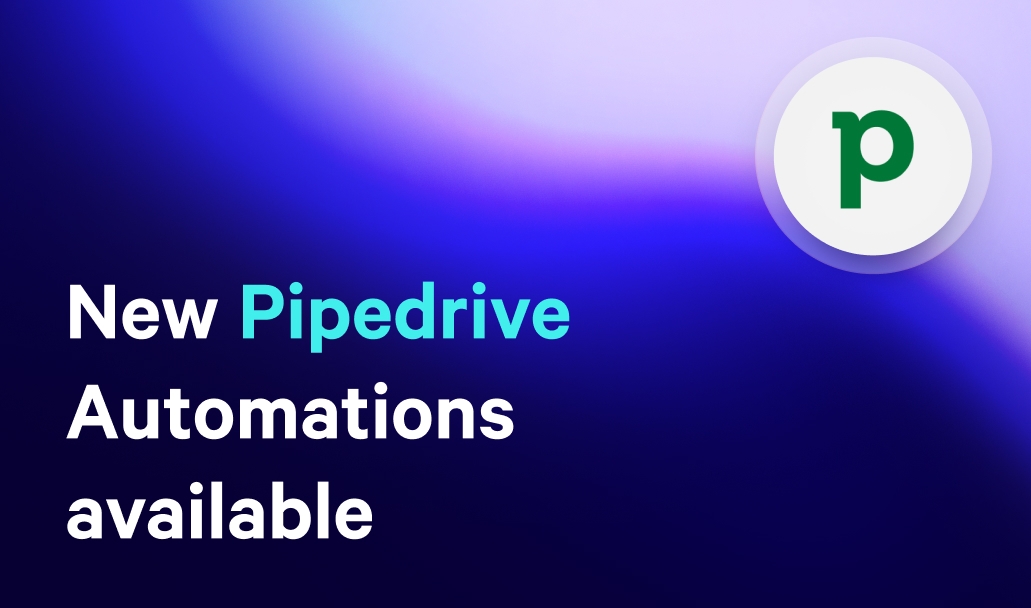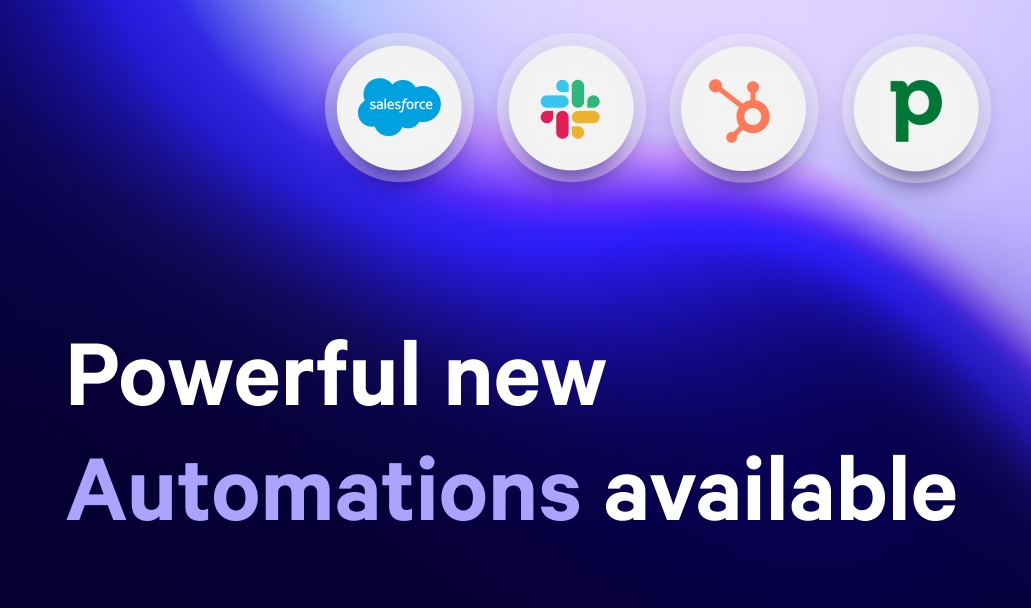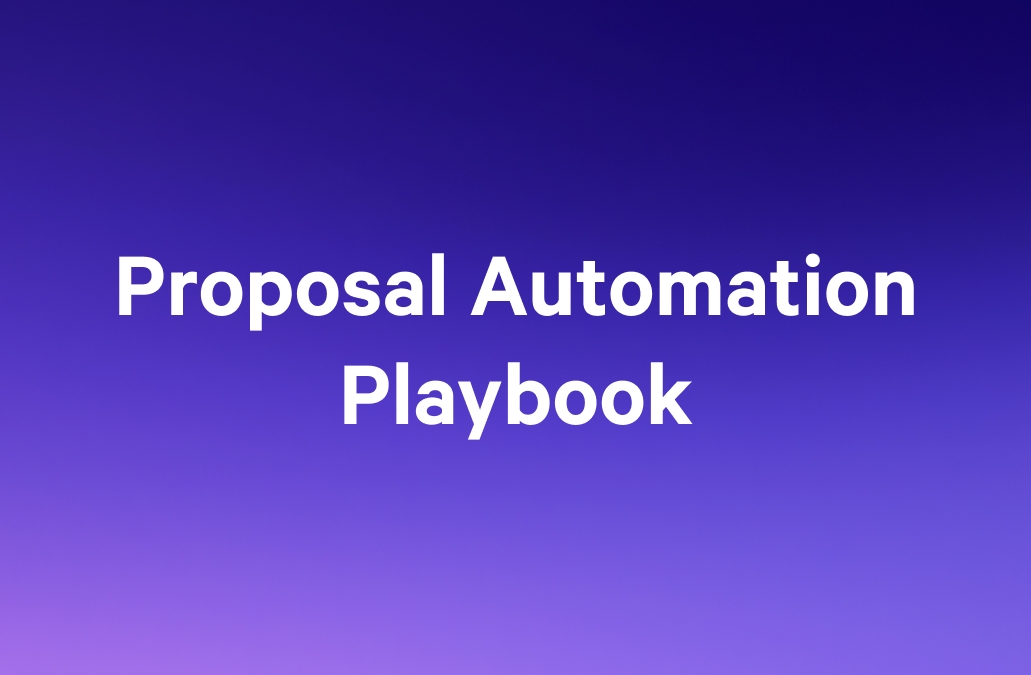Pipedrive is a CRM built for simplicity, pipeline clarity, and sales execution. But even the slickest CRM can’t operate in isolation. A modern sales operation requires a connected ecosystem: tools that automate repetitive tasks, keep your team aligned, enrich data, and accelerate deal velocity.
Here’s the thing: Pipedrive alone isn’t enough. That’s where Pipedrive integrations come in. These integrations act as extensions of your sales brain, bridging marketing, proposals, finance, and operations into one seamless flow. When done well, integrations don’t just save time; they create visibility, reduce errors, and empower reps to focus on what actually drives revenue: selling.
This guide unpacks the 10 best Pipedrive integrations for 2026, how to use them effectively, and how to build a tech stack that scales as your sales process evolves.
Top 10 integrations at a glance
| Integration | The Gist | Best For | Pricing |
|---|---|---|---|
Qwilr | Interactive proposals, quotes, pitch decks; pulls Pipedrive data; tracks engagement; supports e-signatures & payments. | Sales teams relying heavily on proposals and documents. | $35/user/mo |
Zapier | Completely automates tasks, removing manual work and keeping your entire workflow running automatically. | Teams that want to automate processes end-to-end without writing a single line of code. | $19.99/user/mo |
ActiveCampaign | Marketing automation + CRM; two-way Pipedrive sync; engagement tracking and automations. | Teams needing sales-marketing alignment. | $15/user/mo |
Zoom Meetings | Schedule/start video calls from Pipedrive; meetings logged to deals; supports workflows. | Remote/hybrid sales teams tracking meeting activity. | $13.33/host/mo |
Slack | Pushes CRM updates to channels; trigger actions; improves team visibility. | Teams needing instant pipeline alerts and collaboration. | Free / $4.38+/user/mo |
Xero | Sync won deals to invoices; track payments; revenue recognition. | Teams bridging sales & finance for cash flow visibility. | $25/mo |
Stripe | Payments & subscriptions linked to Pipedrive; tracks payment status. | Teams needing end-to-end payment tracking. | 2.9% + $0.30/transaction |
Asana | Automates post-sale projects/tasks; updates Pipedrive based on completion. | Teams managing onboarding or implementation tasks. | $10.99+/user/mo |
Google Sheets | Push CRM data for reporting, dashboards, KPIs; can update Pipedrive. | Teams needing custom reports and advanced KPI tracking. | $6/user/mo |
Gmail/Outlook | Sync emails, attachments, calendar to Pipedrive; track opens/clicks. | Teams needing full communication visibility in CRM. | Gmail $6–18/mo; Outlook $6.99–22/mo |
1. Qwilr – Proposal & document automation

Qwilr is a web-based proposal management platform for creating interactive, branded sales documents such as proposals, quotes, pitch decks, and onboarding material. The Pipedrive integration allows you to generate these documents directly from CRM data, pulling information from Deals, Contacts, or Organizations into pre-designed templates.
Beyond document creation, Qwilr tracks engagement—like views, time spent, and accepted proposals—while automatically updating Pipedrive deal stages. It also supports embedded e-signatures and payments, meaning the entire proposal-to-close workflow is visible in one platform. This is particularly valuable for sales teams that rely on proposals as a central part of their revenue operations.

Activity, like whether a page is Accepted or Declined, will not only be automatically reflected in your Deals, but can be used to trigger complex sequences via Pipedrive’s Automations.
You can sync things like:
- Deal stages to Qwilr page events
- Page links
- Page views
- Expiry date
- QwilrPay status and amount collected
With this data, you can then harness Pipedrive’s Automations to trigger emails, rep activities, and more.
USP
Qwilr combines proposal generation, e-signatures, and payment collection in one workflow, keeping your CRM fully up to date.
Pros
- Instant proposal creation with pre-filled CRM data
- Automatic deal stage updates based on document status
- Embedded e-signatures and payments via QwilrPay
- Analytics-driven insights: know which sections of your proposal were read or ignored
Cons
- Requires the setup of templates and tokens to automate fully
- Best suited for teams using proposals as a central sales tool
- Business plan: $35/user/month
- Enterprise plan: $59/user/month
- Business add-ons: $10/user/month
Why Qwilr works better than native Pipedrive document handling:
Qwilr’s Pipedrive integration doesn’t just push data; it transforms how proposals fit into your sales workflow. With Qwilr, proposals are web-based and interactive, not static PDFs, making every interaction trackable, versionless, and shareable across your team. Actions like viewed, accepted, and signed proposals automatically update Pipedrive deal stages, giving sales managers real-time visibility into where deals stall and how engagement signals buyer intent.
Unlike native Pipedrive document tools, Qwilr enforces brand consistency, pricing logic, and legal compliance across templates, reducing rep-by-rep discrepancies and protecting margins. One Qwilr page becomes a single source of truth from proposal to payment, keeping both sales teams and buyers aligned throughout the entire cycle.
Hidden gem: Qwilr’s “Create a Qwilr Page” button in Pipedrive lets reps generate fully personalized proposals, automatically pulling data from Pipedrive via custom tokens, and integrating with deal, contact, or organization fields for a seamless workflow. This setup boosts automation, deal velocity, and revenue operations efficiency across your pipeline.
2. Zapier – Workflow automation connecting your entire stack

Zapier is the automation backbone of modern sales teams, connecting Pipedrive with more than 6,000 apps, from marketing tools to finance platforms, spreadsheets, and help desks. Instead of manually moving data between systems, Zapier lets you build automated workflows (“Zaps”) that trigger when something happens in Pipedrive, such as a new deal being created, a stage changing, or a contact being updated.
These workflows can:
- Create tasks in Asana or Trello
- Notify Slack channels of pipeline updates
- Send personalized emails
- Update Google Sheets dashboards
- Trigger Qwilr proposal generation
- Create invoices in Xero or Stripe
- Sync contacts into Mailchimp or ActiveCampaign …and the list goes on.
Zapier’s power lies in its ability to eliminate repetitive admin, reduce errors from manual updates, and ensure data is always moving between systems without human intervention.
USP
The easiest way to automate Pipedrive end-to-end: no coding, no IT department, just powerful multi-step workflows.
Pros
- Automates repetitive tasks like deal updates, lead assignment, and data syncing
- Connects Pipedrive to virtually any other tool in your tech stack
- Supports conditional logic, filters, and multi-step automations
- Reduces admin by pushing clean, structured data across platforms
Cons
- Complex workflows may require careful planning and testing
- High-volume automations may need higher-tier plans
Pricing
Free plan available; paid plans start at $19.99/month, depending on usage and automation volume.
3. ActiveCampaign – Marketing automation & contact/deal sync

ActiveCampaign is a marketing automation and CRM platform that focuses on customer experience, combining email marketing, automation workflows, and predictive lead scoring. When integrated with Pipedrive, it allows two-way sync of contacts, deals, and engagement data.
Marketing behavior, such as email opens, clicks, or website visits, is reflected in Pipedrive, while pipeline events in Pipedrive can trigger marketing automations such as drip campaigns, lead nurturing, or segmentation. This ensures sales and marketing are fully aligned and provides a single source of truth for measuring lead conversion and campaign effectiveness.
USP
Two-way sync creates sales-marketing alignment, making lead scoring and engagement tracking smarter.
Pros
- Tracks email opens, clicks, and website visits in Pipedrive
- Automates follow-ups and drip campaigns
- Improves marketing-sales collaboration and visibility
Cons
- Requires third-party connectors like Outfunnel for full two-way sync
- It can be complex to map triggers and workflows
Pricing
- Plans start at $15/month (for basic marketing automation); pricing scales with contacts and automation features.
4. Zoom Meetings – Video conferencing integrated into CRM

Zoom is a widely used video conferencing tool, and its Pipedrive integration lets teams schedule, start, and manage video meetings directly from CRM activities. Unique Zoom links are automatically generated for meetings scheduled in Pipedrive, and the integration ensures that each meeting is logged against the corresponding deal or contact.
Advanced workflows, triggered via platforms like Zapier, can create Zoom meetings automatically when new deals are created, or attach meeting recordings to deals for future reference. This integration is critical for hybrid and remote sales teams, ensuring meeting context and data are never lost.
USP
Keeps meetings connected to deals, ensuring context, traceability, and performance measurement.
Pros
- Schedule Zoom calls from Pipedrive without leaving the CRM
- Meetings are automatically logged to Pipedrive
- Can trigger additional workflows via automation platforms
Cons
- Advanced automation may need third-party tools like Zapier
Pricing
- Zoom plans start at $13.33/month/host
5. Slack – Team communication & pipeline alerts

Slack is a real-time team communication platform widely used for collaboration. Its integration with Pipedrive pushes key CRM updates directly into Slack channels, including deal stage changes, new deal creation, or high-value notifications. Teams can often trigger actions in Pipedrive from Slack commands and retrieve deal summaries quickly.
By bringing pipeline visibility into the team’s primary workspace, Slack integration reduces context switching, keeps sales and operations teams aligned, and helps managers monitor pipeline activity without constantly opening the CRM.
USP
Keeps your team aligned with pipeline updates without context-switching.
Pros
- Instant deal stage and high-value deal alerts
- Can pull Pipedrive summaries into Slack for quick access
- Reduces deal blind spots and improves responsiveness
Cons
- Some advanced actions depend on the workflow builder setup
- It can become noisy if not configured properly
Pricing
- Free and paid Slack plans available; paid plans start at $4,38/user/month.
6. Xero – Invoicing & accounting sync

Xero is a cloud-based accounting platform designed for small to medium businesses. Its integration with Pipedrive links won deals to invoicing and financial tracking. When a deal is closed, Xero can automatically generate invoices, sync payment status back into Pipedrive, and facilitate revenue recognition. This ensures continuity between sales and finance operations, reduces duplication, and gives both teams visibility into cash flow and outstanding invoices.
USPBridges sales and finance operations, ensuring pipeline accuracy and faster revenue recognition.
Pros
- Reduces duplication between sales and finance
- Tracks payment status back into Pipedrive
- Supports revenue recognition with fewer manual steps
Cons
- Requires setup of financial mapping between Pipedrive and Xero
- Advanced features may need higher Xero subscription tiers
Pricing
- Xero starts at $25/month for small businesses.
7. Stripe – Payments and customer billing

Stripe is a payment processing platform that integrates with Pipedrive to create customers, generate invoices, and accept payments. It also supports subscription management, allowing sales teams to track recurring payments against deals or contacts.
By syncing payment data into Pipedrive, sales teams gain visibility beyond “deal won” to ensure revenue is actually collected, helping prevent revenue leakage and improving cash flow forecasting.
USP
Extends pipeline visibility from “deal won” to “payment received.”
Pros
- Supports one-off payments and subscriptions
- Tracks payment success/failure in Pipedrive
- Helps close revenue loops
Cons
- Payment features may require additional Stripe configuration
- Transaction fees apply
Pricing
- Stripe charges 2.9% + $0.30 per successful transaction; no monthly fee for basic use.
Pssst: If you’re using Qwilr, you can just use QwilrPay instead
8. Asana – Project & task workflow link

Asana is a project and task management platform that integrates with Pipedrive to automate workflows for post-sale activities. When a deal reaches a certain stage, Asana can automatically create a project or task bundle assigned to the relevant team.
Task completion can trigger updates in Pipedrive, keeping sales, operations, and project management in sync. This ensures smooth hand-offs after deals are closed, enhancing client satisfaction and operational efficiency.
USP
Bridges sales closing and post-sale operational workflows, ensuring smooth hand-offs.
Pros
- Automates project creation for won deals
- Tracks implementation and onboarding tasks
- Supports benchmarking “time from won to live”
Cons
- Advanced automations require setup in Asana or third-party tools
- Limited customization on task mapping in basic plans
Pricing
- Free for basic use; Premium plan starts at $10.99/user/month
9. Google Sheets – Custom reporting & data export

Google Sheets is a spreadsheet platform that can integrate with Pipedrive for automated data export and reporting. Sales operations teams, analysts, and managers can push CRM data (deals, contacts, activities) into Sheets on a schedule or in real-time, enabling custom dashboards, KPIs, and offline analysis.
You can also update Pipedrive from Sheets for bulk edits or cross-referenced data workflows. This gives teams flexibility to calculate metrics beyond what the CRM offers natively, such as segmented conversion rates, proposal efficiency, or deal velocity.
USP
Enables unlimited reporting flexibility and advanced KPI tracking.
Pros
- Pushes CRM data automatically for custom dashboards
- Supports complex formula calculations, segmentation, and cross-referencing
- Reduces manual exports and errors
Cons
- Requires setup of Zapier or custom scripts for full automation
- Not a live CRM view; some data latency may exist
Pricing
- Google Workspace plans start at $6/user/month
10. Outlook or Gmail – Email logging & communication sync

Outlook and Gmail integrations sync emails, attachments, calendar invites, and contacts into Pipedrive, automatically linking communication to deals. This allows sales teams to maintain a complete record of client interactions.
Advanced features include email tracking (opens, clicks), and calendar integration so meetings scheduled in email clients appear as activities in Pipedrive. It ensures all correspondence and touchpoints are visible, providing accurate reporting for sales activity and KPIs.
USP
Captures complete communication history for accurate pipeline tracking and KPI measurement.
Pros
- Automatic email logging and link-back to CRM
- Track email opens, clicks, and response times
- Calendar invites sync as activities in Pipedrive
Cons
- Full tracking may require paid Gmail/Outlook add-ons
- Some manual configuration may be required to link email threads properly
Pricing
- Gmail: included with Google Workspace ($6–$18/user/month)
- Outlook: included with Microsoft 365 ($6.99–$22/user/month)
About the author

Brendan Connaughton|Head of Growth Marketing
Brendan heads up growth marketing and demand generation at Qwilr, overseeing performance marketing, SEO, and lifecycle initiatives. Brendan has been instrumental in developing go-to-market functions for a number of high-growth startups and challenger brands.



